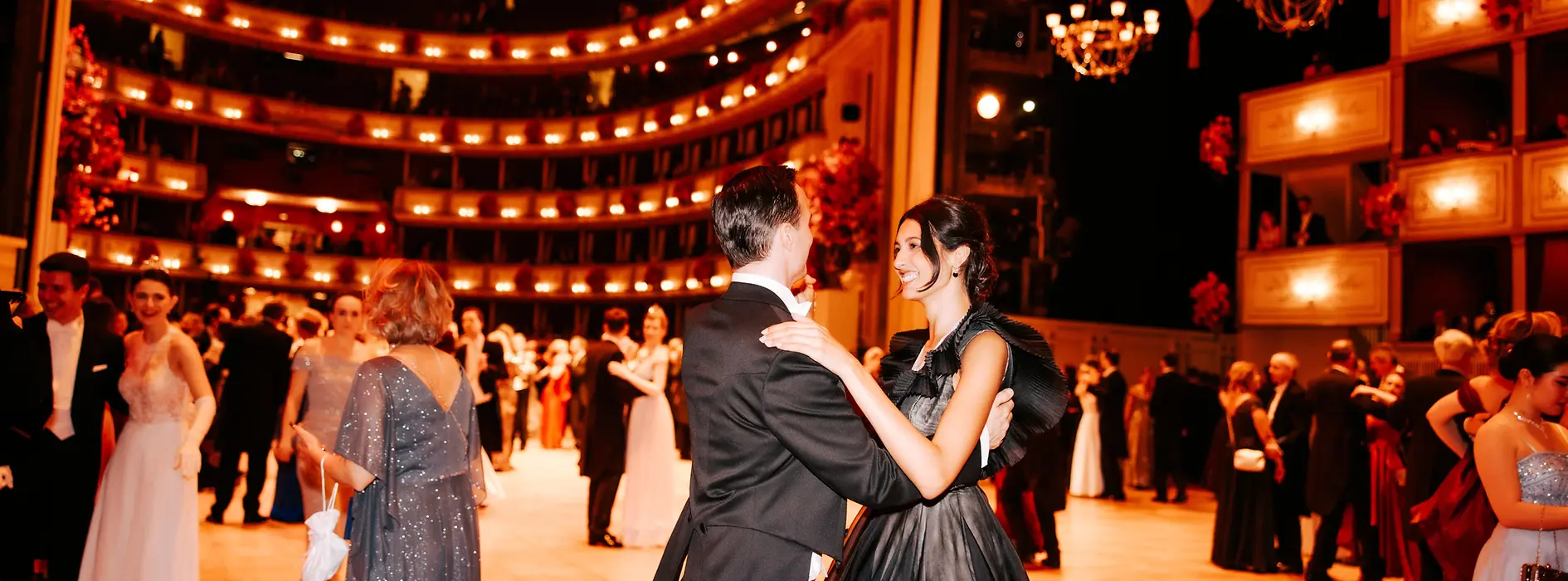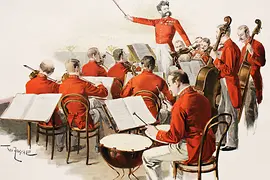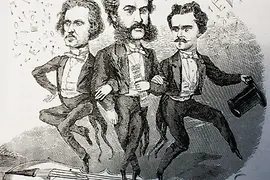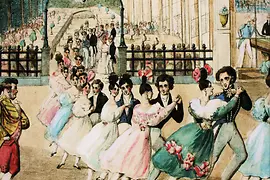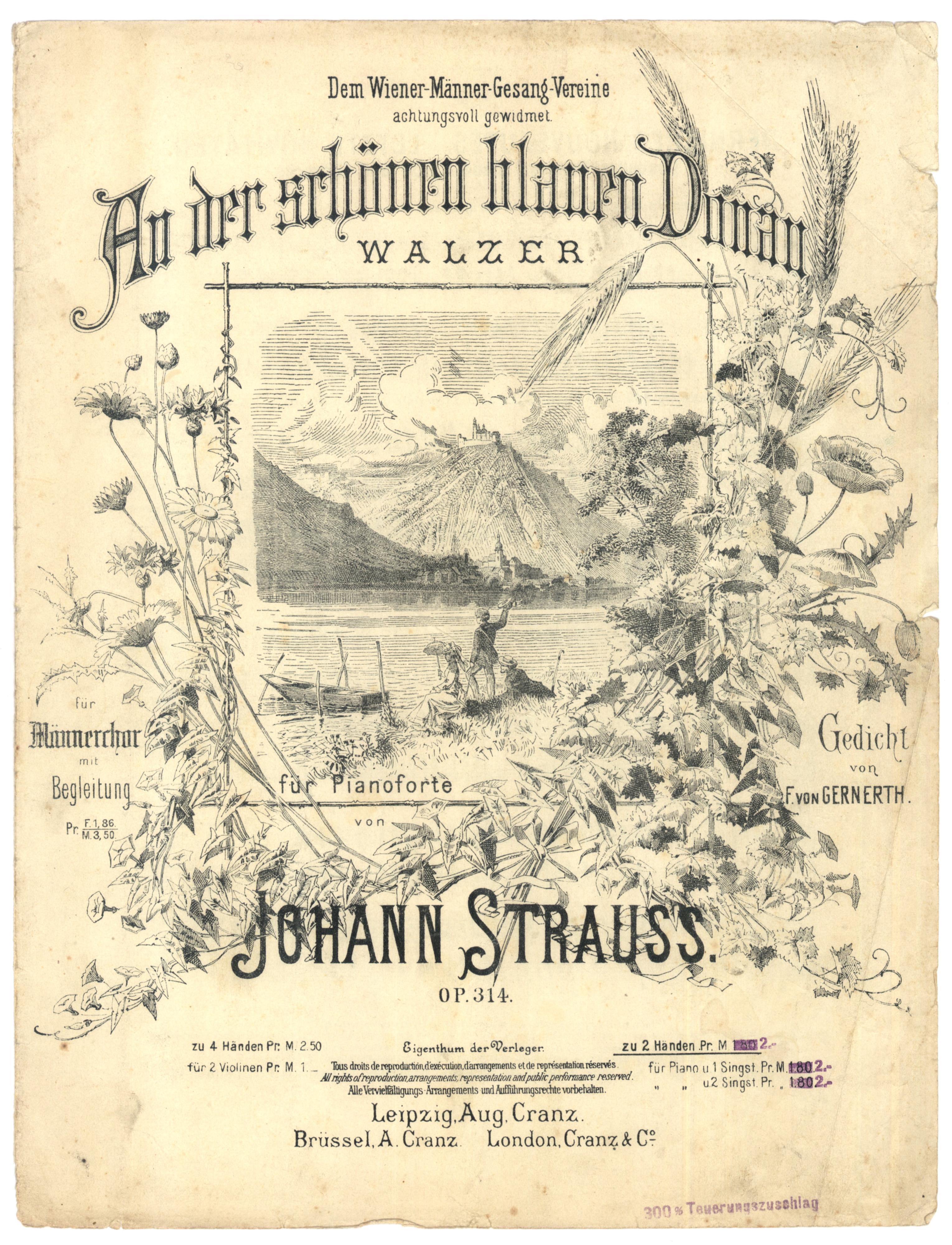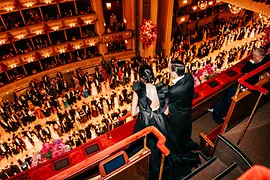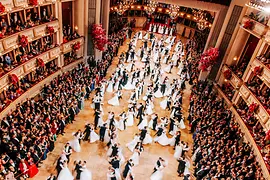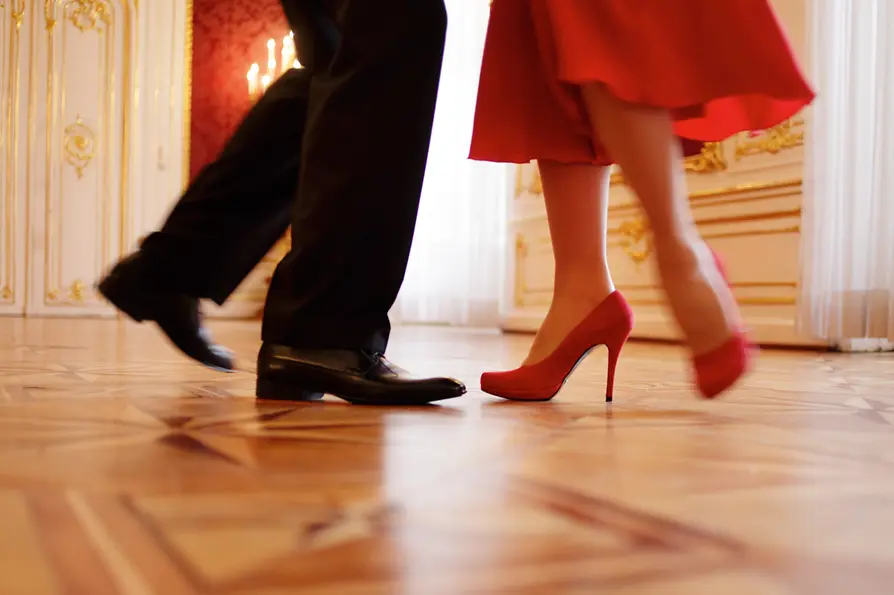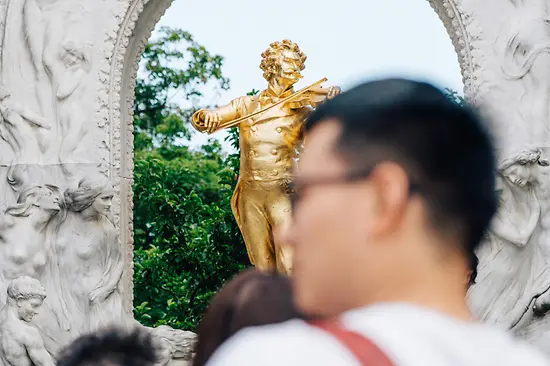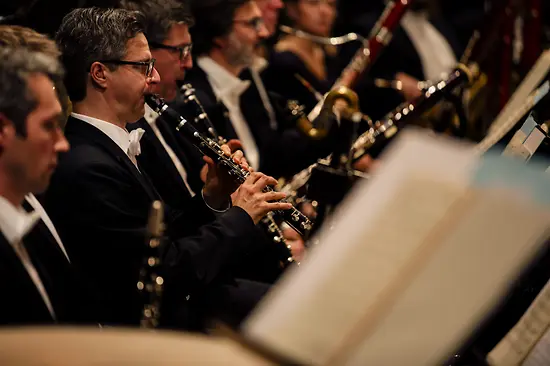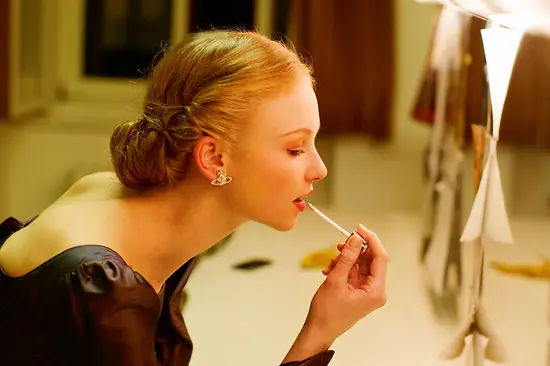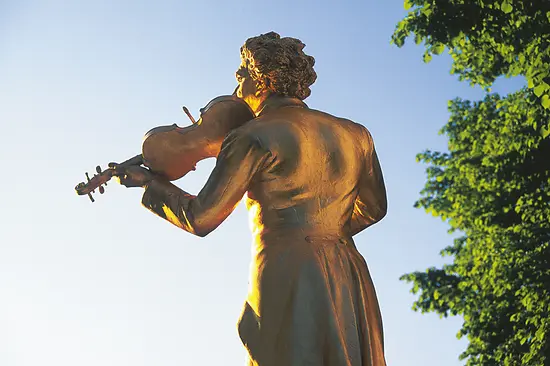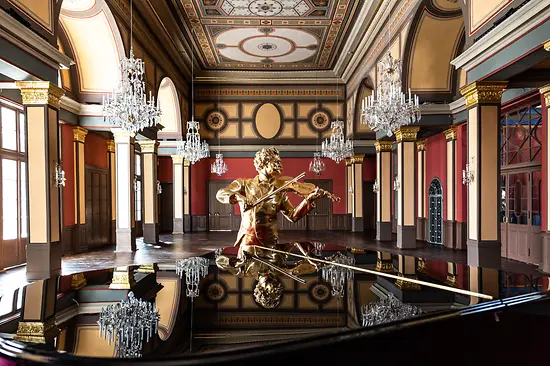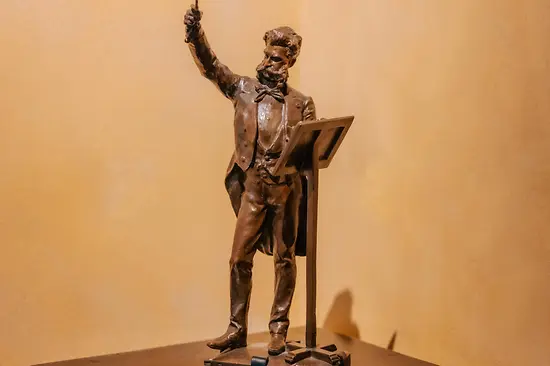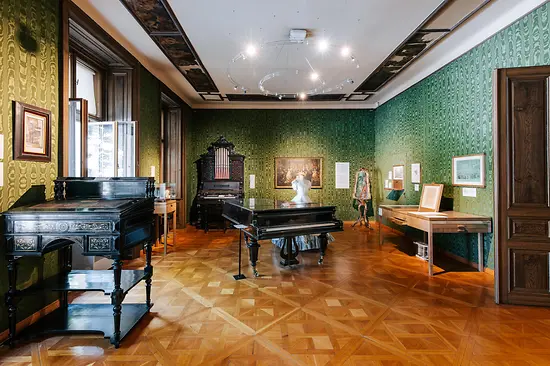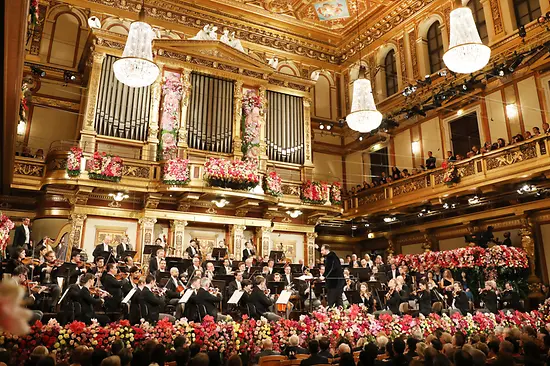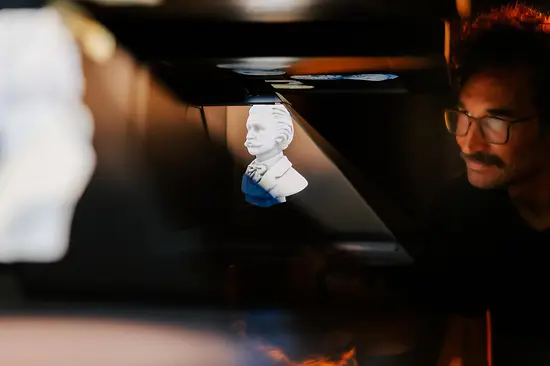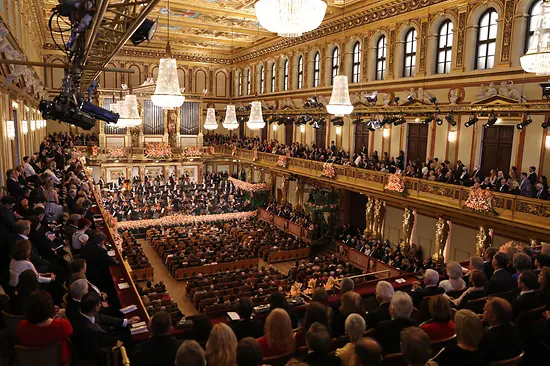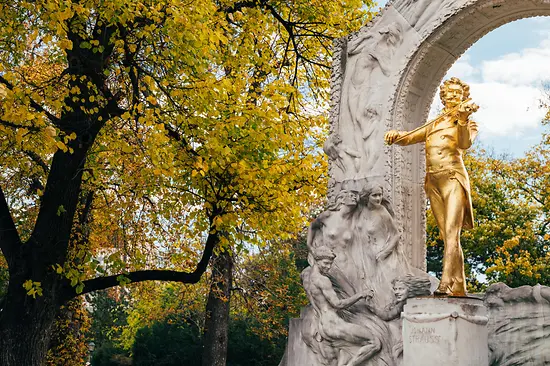Viennese waltz
Schubert, Chopin, Liszt, Brahms and Mahler wrote waltzes that are not intended to be danced to but rather as a song, for piano or orchestra. However, it was the danceable waltzes of the Strauss dynasty that triumphed around the world like no other. Dancing the waltz - that was and is the Viennese way of partying. Nowhere else is that so keenly celebrated as at the Viennese balls.
Everything about the Viennese ball season
Viennese ball culture had its beginnings about 200 years ago, when Europe was being restructured at the Congress of Vienna in 1814/15. An effort was made to make the negotiating guests' stay more pleasant with balls and social events. The catchphrase was: "The Congress is dancing". The whole of Vienna swayed in three-four time and became the city of the waltz.
The Waltz King, Johann Strauss II.
When it came to dance music, the public expected a constant stream of new waltzes or polkas. Composers such as Joseph Lanner, Johann Strauss Sr. and Jr. supplied quantity and quality - and often conducted their own works. The were celebrated like popstars. Johann Strauss Sr. (1804-1849) composed the "Radetzky March". Johann Strauss Jr. (1825-1899) went down in history as the "Waltz King", his concert tours taking him to Russia and America. His brothers Josef and Eduard also made music.
Blue Danube waltz - the first hit
Perhaps Strauss Jr.'s most famous work is the Blue Danube Waltz, actually entitled "On the beautiful, blue Danube". It was created in Strauss’ apartment at Praterstraße 54, which has been conserved in its original state and is well worth a visit.
On 17 February 1867, the 'Neues Fremdenblatt' wrote about the acclaimed premiere: "The opening number of the second movement was a decisive hit" - the first recorded use of the term 'hit'. The nine-minute, would-be national anthem of Austria is regularly played at the change of year, for example as an encore and highpoint of the globally broadcast New Year's Concert of the Vienna Philharmonic and at Viennese balls, which are also a unique experience for visitors to Vienna.
Strauss’ fellow composer Johannes Brahms also appreciated the composition; he is said to have once notated the melody of the Danube Waltz on a lady’s ball fan, adding the words “Leider nicht von mir” (Unfortunately not my work).
The story of the Danube Waltz and much more about the Strauss dynasty is presented in the House of Strauss, a multimedia museum dedicated to the Waltz King. Johann Strauss II once performed in the Strauss Hall there, and today his music can still be heard in concerts.
Famous as far as outer space
The Danube Waltz became a popular national anthem during Strauss’s lifetime, on a par with Joseph Haydn’s imperial anthem “Gott erhalte”. When Austria’s independence was proclaimed in April 1945, the Danube Waltz was played in front of parliament in the absence of an official anthem, and the Austrian national soccer team also played it after the Second World War.
This was the very first music that Austrian television broadcast on the airwaves in 1955. A variation of the melody can still be found today in the sound signature of the ORF news program “Zeit im Bild”. Austrian Airlines also plays music as its passengers board the plane in three-four time. The Danube waltz also found its way into pop culture, for example as background music in cartoons such as “Tom & Jerry” or in the US series “The Simpsons”.
It finally achieved the very highest cult status in Stanley Kubrick’s 1968 sci-fi classic “2001: A Space Odyssey”: a multi-ton spaceship docks with a spinning space station seemingly effortlessly to the accompaniment of Strauss’ music. The film sequence is precisely matched to the length and rhythm of the waltz – a tribute to Strauss’ masterful composition.
Dancing the waltz
The journey from non-dancer to ball-ready is a short one with the assistance of the Vienna Dance Schools. The dance consists of just six steps; what makes it challenging is the high speed. Experienced dancers alternate the right-hand waltz with the more difficult variant in the opposite direction. Those who become dizzy from the rapid turning (tip: always look in the direction you’re dancing and especially never at the floor!) or find their path blocked on a busy dance floor, can steal a couple of quiet rock steps on the spot.
Someone who dances twelve waltzes in a single evening will have completed about an hour of physical exercise, including 2,500 turns, 5,000 steps and a distance of 5 kilometers.
UNESCO cultural heritage
In November 2017, UNESCO added the Viennese waltz – played, danced and sung – to the Austrian list of intangible cultural heritage. The waltz has a tradition: Passed down are both the specific playing technique and interpretation method of the Viennese waltz, as well as the dance itself, through symphony and dance orchestras, choirs and dance schools.
